Five Heart Health Benefits of Owning a Pet
According to the American Heart Association:
- Improved Health Status of Heart Patients
Dogs ease anxiety and improve the health status of hospitalized heart failure patients.
- Anxiety Decreases
Researchers found that anxiety scores dropped 24 percent for participants who received a visit from the volunteer-dog team. Scores for the human volunteer-only group dropped 10 percent and the at-rest group’s score did not change.
- Decreased Stress
Simply having a pet in the room, decreases the stress response. Levels of epinephrine, a hormone the body makes when under stress, dropped about 17 percent in patients visited by a person and a dog, and 2 percent in those visited just by a person. But levels rose about 7 percent in the unvisited group.
- Heart Pressure Decreases
Heart pressure dropped 10 percent after the visit by the volunteer and dog. It increased 3 percent for those visited by a human volunteer and 5 percent for those who got no visit. Lung pressure declined 5 percent for those visited by a dog and a volunteer. It rose in the other two groups.
- Benefits Blood Pressure
People with a dog or cat suffered only half the blood pressure increase of those without.
Be sure to return the favor by protecting the health of your furry family members with the gift of pet insurance from Union Plus Pet Insurance.
LEARN MORE ABOUT THE UNION PLUS PET INSURANCE PROGRAM

Pet insurance coverage offered and administered by Pets Best Insurance Services, LLC is underwritten by American Pet Insurance Company.
It’s no secret that animals and humans share a special bond. It’s also well known that being around pets can positively impact your health in measurable ways. In fact, there are numerous studies on the health benefits associated with being around animals. Here are just a few health-related reasons to spend more time with your pets.
How to Drive on Icy Roads
Icy roads are one of winter’s biggest dangers. Fortunately, you can take simple steps to keep you safer.
Change Your Tires
If cold, icy winters are common in your area, swap your regular tires for snow tires to gain more control. Snow tires have more contact edges than normal tires, allowing them to grip the road better. Also, the rubber on snow tires stays pliable in low temperatures, which helps provide better traction.
Drive Cautiously
- Think gradual. Quick movements, such as fast acceleration or sudden turns, have little effect on icy roads—you just spin your wheels or continue in the same direction. Slow your motions so your vehicle has time to respond. Brake gradually, too: Slamming on the brakes, even antilock brakes, can cause your car to slide. To give yourself enough time to brake, allow up to 10 times the normal distance between your car and the car ahead of you.
- Slow Down. Remember that posted speed limits are for ideal driving conditions. If the roads are icy, reduce your speed to reduce the risk of getting in an accident.
- Correction. If your car starts to skid or slide, take your foot off the gas. Slowly turn the wheel in the direction you want the car to travel. If your vehicle has antilock brakes, apply firm pressure until you regain control. You can steer during this maneuver. As your car spins, work to regain a neutral steering position. You have more control when your tires face the same direction.
Know the Roads
To stay ahead of icy roads, know when and where ice forms. Any winter precipitation can cause ice, as can sudden temperature changes. “Black ice” (a thin, almost invisible coat) is most likely to form on intersections, bridges, overpasses, underpasses and ramps. For more about dealing with black ice, follow this advice from MetLife Auto & Home.
Be Aware of Other Drivers
Driving slowly offers some protection from other drivers, but be sure to keep an eye on the cars ahead of and behind you. If you see brake lights ahead, slow down. If a driver follows closely behind your vehicle, keep a slow pace to force him or her to do the same.
These tips were brought to you by the Union Plus Auto and Home Insurance program. Drivers saved an average of $586* a year on their auto insurance when switching to MetLife Auto & Home®.
Take advantage of the Union Plus Auto and Home Insurance Program by calling 855-666-5797 today. Remember to mention your discount code: DJ7.
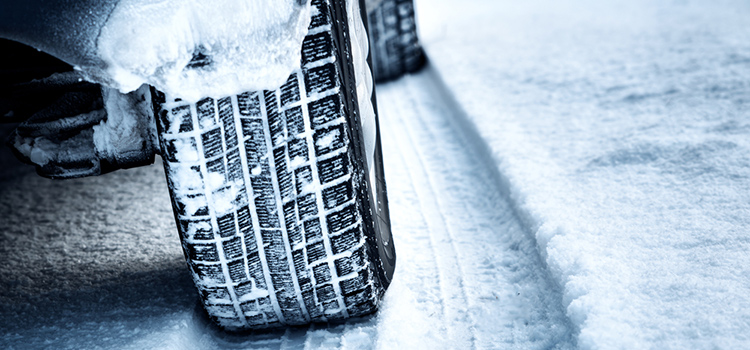
*Savings based on our 2018 countrywide research of new call center customers’ annual average savings in 2017. Statistics do not reflect sales of the product sold on MetLife Auto & Home MyDirectSM.
Group Discounts are filed on an individual basis in MA and may not be available as part of MetLife Auto & Home's benefit offering.
MetLife Auto & Home is a brand of Metropolitan Property and Casualty Insurance Company and its affiliates: Economy Preferred Insurance Company, Metropolitan Casualty Insurance Company, Metropolitan Direct Property and Casualty Insurance Company, Metropolitan General Insurance Company, Metropolitan Group Property and Casualty Insurance Company and Metropolitan Lloyds Insurance Company of Texas, all with administrative home offices in Warwick, RI. Coverage, rates and discounts and policy features vary by state and product, and are available in most states to those who qualify. Met P&C®, MetCasSM and MetGenSM are licensed in the state of MN.
© 2018 MetLife Auto & Home
L1016481659[exp0919][All States][DC]

Slick streets? Take precautions! These tips can help improve your safety.
Stop These Top Five Distracting Driving Habits
Consider these five distracting driving habits and how to change them:
- Eating or drinking
Hot coffee spills, greasy hands or stray crumbs could distract you from the road. Eat before you get behind the wheel or after you’ve reached your destination. If you need a snack now, find some place off the road to stop.
- Making hands-free calls
You may not take your hands off the wheel, but calls can take your mind off the road. Turn off your phone’s Bluetooth capabilities before you drive off, and silence your phone to help prevent temptation. If you really need to make a call, safely pull over to talk.
- Messing with dials or controls
Adjusting volume, looking for a radio station, plugging in GPS directions or turning up the heat diverts your eyes from the road. Take care of all of the above before shifting into gear. If you must make adjustments, wait until you come to a complete stop at a stoplight, pull over safely, or ask your front-seat passenger to handle them.
- Paying attention to other passengers
Young children and infants can be up to eight times more distracting than adult passengers, according to the AAA Foundation for Traffic Safety. Make sure your little ones have something to occupy them. Or stop the car and pull over safely before investigating the cause of screaming or crying.
- Applying makeup or shaving
The vanity mirror blocks your eyes from the road. Give yourself enough time before leaving home to finish getting ready.
As a union member, you have access to auto insurance with MetLife ChoiceSM allowing you to quickly and easily compare auto coverage from top insurance companies.
Call 855-666-5797 and mention your discount code: DJ7.
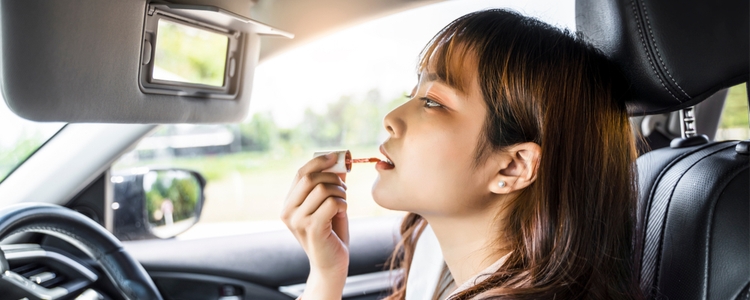

It's harmless to sip your coffee on the way to work, right? Maybe not so much!
Some of the things you do regularly behind the wheel have become so ordinary you might not realize you’re driving distracted and may be at risk of a car accident. But if your eyes, hands or mind are focused on anything but driving, you fit the National Highway Traffic Safety Administration’s definition of a distracted driver.
New Pet Checklist
- Food
Choosing a food that’s appropriate for your new pet can be overwhelming. With hundreds of brands available, it can be difficult to sort through all of the options for a good pet food. Be sure to choose a diet that is consistent with your new pet’s age and size. For example, a 6 month old Chihuahua should eat a small breed puppy food, while an 8 year old Great Dane should eat a giant breed senior formula. Be sure that your pet’s new food contains an AAFCO feeding statement – this means that the food has been scientifically tested and proved to be healthy! Ask your veterinarian for a recommendation on the best foods available and remember, while cheap foods tend to be poor quality, the most expensive food isn’t always the best. - Bedding
Your new pet will need a place to safely and comfortably rest after a long day of playing. If you plan to allow your new pet on the bed and sofa, they may not need their own bed as they will surely prefer yours! However, pets who will sleep in a crate at night or on the floor need an appropriately sized bed. Make sure that the bed is large enough for them to sprawl out comfortably and made from soft padding. Beds need to be washed, so a machine-washable fabric is best.
- Crate or Carrier
New cats and kittens will need a carrier to safely transport them from the house to the veterinary office. New Puppies and dogs often need a crate as a safe place to sleep at night and when left alone at home. Crating your new puppy or dog will keep him safe from chewing on electrical cords, getting into toxic foods and chewing up your favorite pair of shoes! Crates are also very helpful when house training your new pet. Once your puppy or dog is comfortable in the house, potty-trained at night and no longer at risk of getting themselves hurt while unsupervised, you may no longer need the crate. Pets who are prone to getting themselves in trouble (getting into the trash, chewing up household items, counter surfing or fighting with housemates) at any age should be crated while unsupervised no matter what age they are. Providing your new pet with a comfortable carrier or crate that is big enough for them to turn around in also provides them with a “safe place” to hide when the stress of holiday parties and extended family are around.
- Veterinarian
If this is your first pet, you will need to establish a healthcare provider to make sure your new furry friend is healthy. Be sure to schedule your new pet a proper checkup. Preventative care for new pets includes updating vaccines, spaying or neutering, testing for contagious diseases, prescribing heartworm prevention, and having the teeth cleaned in adult pets. Your vet should also assess any skin issues, allergies, runny eyes, ear infections, lumps or bumps. Establishing a veterinarian is an important first step so that you will know who to call in an emergency.
- Pet Insurance
When you adopt a new pet, you also adopt the potential for health issues, injuries and illness. Getting health insurance on your fluffy family member will give you peace of mind that if anything should happen, you won’t have to think twice about healthcare decisions and costs. An after-hours emergency bloat surgery can be anywhere from $3,000-$6,000 depending on what area of the country you are located. Chocolate ingestion in a dog or Lilly flower ingestion in a cat can run several hundred to several thousand dollars for treatment. Parvo treatment on your new puppy is typically $1,000-$2,000 depending on the severity of the illness. Proper healthcare for your pet can be expensive if you pay out of pocket. Having pet insurance provides you and your pet with a financial safety net in the event of illness or injury, even if you accidentally left the chocolate in Fluffy’s reach or you accidentally ran over Rover in the driveway. Pet health insurance means you don’t have to make difficult life and death decisions or skimp on great care for financial reasons.
- Microchip and ID Tag
Accidents happen and sometimes pets get lost. Make sure that your new pet is microchipped immediately and that the microchip company has your complete, updated information should your new pet go missing. In addition, be sure that your new pet has an ID tag on his or her collar that contains your contact information. Tags can be removed and lost, so a Microchip is extremely important. However, ID tags are a very easy way for Good Samaritans to contact you immediately without needing to take your pet to a veterinary clinic to be scanned for the microchip.
- Collar, Leash, Toys, etc.
Don’t forget all the fun stuff! Your new pet will need a collar and leash/harness. Toy are important as they provide entertainment and exercise to both cats and dogs. Bored pets tend to misbehave, so keep your new family member engaged with proper chew toys to chase and play with.
Learn more about the Union Plus Pet Insurance Member Benefit, powered by Pets Best at: https://www.unionplus.org/benefits/insurance/pet-health-insurance.
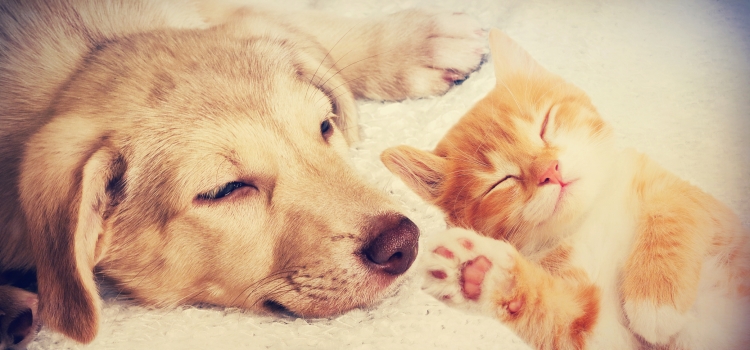
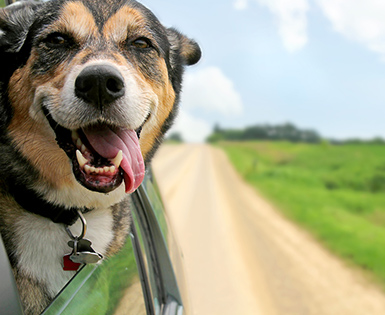
During the holidays many people add a new furry family member to their household. If you find yourself with a new pet this season, make sure the basics are covered by including these 7 must-haves on your checklist!
Seven Must-Haves for Your New Pet
- Food
Choosing a food that’s appropriate for your new pet can be overwhelming. With hundreds of brands available, it can be difficult to sort through all of the options for a good pet food. Be sure to choose a diet that is consistent with your new pet’s age and size. For example, a 6 month old Chihuahua should eat a small breed puppy food, while an 8 year old Great Dane should eat a giant breed senior formula. Be sure that your pet’s new food contains an AAFCO feeding statement – this means that the food has been scientifically tested and proved to be healthy! Ask your veterinarian for a recommendation on the best foods available and remember, while cheap foods tend to be poor quality, the most expensive food isn’t always the best.
- Bedding
Your new pet will need a place to safely and comfortably rest after a long day of playing. If you plan to allow your new pet on the bed and sofa, they may not need their own bed as they will surely prefer yours! However, pets who will sleep in a crate at night or on the floor need an appropriately sized bed. Make sure that the bed is large enough for them to sprawl out comfortably and made from soft padding. Beds need to be washed, so a machine-washable fabric is best.
- Crate or Carrier
New cats and kittens will need a carrier to safely transport them from the house to the veterinary office. New Puppies and dogs often need a crate as a safe place to sleep at night and when left alone at home. Crating your new puppy or dog will keep him safe from chewing on electrical cords, getting into toxic foods and chewing up your favorite pair of shoes! Crates are also very helpful when house training your new pet. Once your puppy or dog is comfortable in the house, potty-trained at night and no longer at risk of getting themselves hurt while unsupervised, you may no longer need the crate. Pets who are prone to getting themselves in trouble (getting into the trash, chewing up household items, counter surfing or fighting with housemates) at any age should be crated while unsupervised no matter what age they are. Providing your new pet with a comfortable carrier or crate that is big enough for them to turn around in also provides them with a “safe place” to hide when the stress of holiday parties and extended family are around.
- Veterinarian
If this is your first pet, you will need to establish a healthcare provider to make sure your new furry friend is healthy. Be sure to schedule your new pet a proper checkup. Preventative care for new pets includes updating vaccines, spaying or neutering, testing for contagious diseases, prescribing heartworm prevention, and having the teeth cleaned in adult pets. Your vet should also assess any skin issues, allergies, runny eyes, ear infections, lumps or bumps. Establishing a veterinarian is an important first step so that you will know who to call in an emergency.
- Pet Insurance
When you adopt a new pet, you also adopt the potential for health issues, injuries and illness. Getting health insurance on your fluffy family member will give you peace of mind that if anything should happen, you won’t have to think twice about healthcare decisions and costs. An after-hours emergency bloat surgery can be anywhere from $3,000-$6,000 depending on what area of the country you are located. Chocolate ingestion in a dog or Lilly flower ingestion in a cat can run several hundred to several thousand dollars for treatment. Parvo treatment on your new puppy is typically $1,000-$2,000 depending on the severity of the illness.
Proper healthcare for your pet can be expensive if you pay out of pocket. Having pet insurance provides you and your pet with a financial safety net in the event of illness or injury, even if you accidentally left the chocolate in Fluffy’s reach or you accidentally ran over Rover in the driveway. Pet health insurance means you don’t have to make difficult life and death decisions or skimp on great care for financial reasons.
- Microchip and ID Tag
Accidents happen and sometimes pets get lost. Make sure that your new pet is microchipped immediately and that the microchip company has your complete, updated information should your new pet go missing. In addition, be sure that your new pet has an ID tag on his or her collar that contains your contact information. Tags can be removed and lost, so a Microchip is extremely important. However, ID tags are a very easy way for Good Samaritans to contact you immediately without needing to take your pet to a veterinary clinic to be scanned for the microchip.
- Collar, Leash, Toys, etc.
Don’t forget all the fun stuff! Your new pet will need a collar and leash/harness. Toy are important as they provide entertainment and exercise to both cats and dogs. Bored pets tend to misbehave, so keep your new family member engaged with proper chew toys to chase and play with.
Learn more about the Union Plus
Pet Insurance Member Benefit, powered by Pets Best

During the holidays many people add a new furry family member to their household. If you find yourself with a new pet this season, make sure the basics are covered by including these seven must-haves on your checklist!
Winter Safety Checklist for Pet Owners
- Use “Pet-Friendly” Antifreeze
Thankfully, it’s well publicized that antifreeze is tempting to pets, as well as a detriment to pet health. Accidental ingestion is a big reason why pet owners are so thankful for the services of their pet insurance company every year.
Some antifreeze brands have an added bitterant to keep pets and children from ingesting it, and others, like Prestone LowTox Antifreeze Coolant, are less toxic blends. You should still be careful to keep your pet away from it, but if accidental ingestion should occur, results may not be fatal.
- Bang on Your Car Hood Before Starting the Car
Feral and loose cats know how to find warm sleeping spots, often including wheel wells and warm car engines. Too often, these cats are run over or maimed by rotating fan belts or engine components. Get in the habit of always banging on the hood as you approach your car, and then honking the horn before you start it, to scare away potential heat seekers.
- Screen Your Fireplace
Cats love to use fireplace soot as cat litter, but should never be allowed to get in the habit of entering an open fireplace. Secure screens or glass doors to fireplaces. Here’s a helpful video showing how. Another option is laying something undesirable in front of the fireplace, like double sided tape or a “scat mat.”
- Microchip or Invest in a GPS Collar
Microchipping is a great way to ensure your pet always has identification, but the chips only work if your pet is found and scanned correctly. A GPS pet tracking collar is a great backup, especially in the winter. Of course, leash safety should be of prime concern year-long, but microchips and GPS collars can really pay off if your dog becomes lost.
If a winter-related accident or illness occurs with your pet, be sure to call your veterinarian immediately so they can help you determine what to do next. Unexpected veterinary visits can be expensive but that’s where pet insurance can help, by reimbursing on veterinary bills.
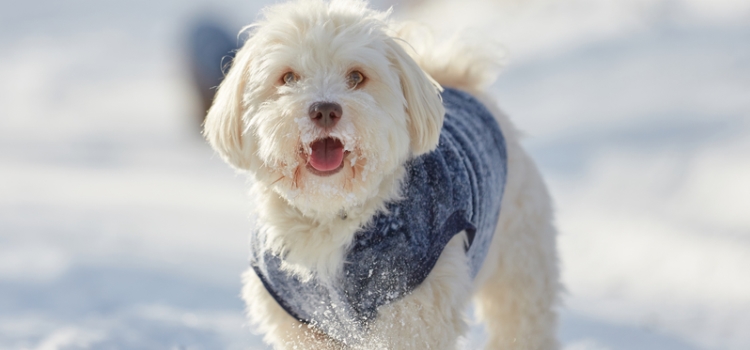
The winter months bring cold temperatures and snow to most parts of the country, presenting several safety hazards to our pets. Here are four (not so obvious) best practices for pet parents to keep their dogs and cats safe this winter.
Six Holiday Foods to Keep Away From Your Pets
Learn why the following six foods can be dangerous for dogs and cats.
-
Stuffing
Thanksgiving dressing is often made with onions, scallions or garlic. These ingredients, however, are extremely toxic to dogs and cats and can cause a life-threatening anemia (destruction of the red blood cells). It’s best to avoid feeding any amount of stuffing to pets.
-
Ham
Ham and other pork products can cause pancreatitis, upset stomach, vomiting and diarrhea. Pork tends to be high in fat as well, which can lead to obesity in pets. Even a small amount of ham can contribute a very large amount of calories in a small dog or cat.
-
Turkey Bones
Bones can cause severe indigestion in dogs and cats, potentially causing vomiting and obstructing the bowel. Bones may also splinter and cause damage to the inside of the stomach and intestines. In some cases, turkey bones may even puncture through the stomach and cause a potentially fatal abdominal infection.
-
Mashed Potatoes
While potatoes are safe for pets to eat, mashed potatoes usually contain butter and milk, which can cause diarrhea in lactose intolerant pets. Additionally, some recipes call for onion powder or garlic, which are very toxic to pets.
-
Salads with Grapes/Raisins
There are many salads served during the holidays that include grapes or raisins as an ingredient, from fruit salad, to waldorf salad, to ambrosia. However, grapes and raisins are very toxic and potentially deadly. Grapes can cause severe, irreversible and sometimes fatal kidney failure in dogs. Be sure to keep all dishes that include grapes and raisins away from pets.
-
Chocolate Desserts
While pumpkin pie is the most famous Thanksgiving dessert and canned pumpkin has pet health benefits, many people offer a variety of chocolate desserts at Thanksgiving and throughout the holidays. Chocolate is toxic to dogs and cats, yet dogs love the smell and taste of it. The darker the chocolate, the more toxic it is. Keep all chocolate desserts out of the reach of pets to prevent an emergency trip to the veterinarian.
If your pets ingest any of these foods this holiday season, be sure to call your veterinarian immediately. Unexpected veterinary visits can be expensive but that’s where pet insurance can help, by reimbursing on veterinary bills.
Have a happy and safe holiday season!
Learn more about the
Union Plus Pet Insurance Member Benefit,
powered by Pets Best

The holidays are almost here and that means an abundance of delicious food. However, many popular human dishes aren’t healthy for pets to consume. This is important to remember during holiday meals, when dogs and cats beg for table scraps and guests might fall for those cute faces.
Is Your Home Underinsured?
Improvements Can Boost Home Value
Home improvement projects do more than increase your comfort and pleasure—they can spike the cost to rebuild your home.
How to fix it: Once a year, do a policy review with your MetLife Auto & Home insurance representative. He or she can calculate how much it would cost to rebuild your house, then make sure your insurance policy covers you for 100 percent of that estimated amount.
Higher Construction Costs Aren’t Factored In
Even if your home was properly insured when you purchased it from a builder, today’s higher costs of construction and changes in building codes could cause problems should you need to rebuild.
How to fix it: Ask for a total component rebuilding estimate that evaluates each aspect of your home’s construction. This includes examining the quality of materials — flooring, cabinets, vanities and countertops — rather than merely applying known rates of inflation to your former insurance limits.
Older Homes Have Unique Characteristics
Older homes, especially if they are historic, present unique insurance challenges.
Potential problems: Older homes often feature better craftsmanship and higher-quality materials than those used in contemporary homes. Details, such as high-grade wood floors or an elaborately detailed Victorian exterior, can be much more expensive to replace than modern vinyl tile and siding.

L0717496846[exp0620][All States][DC]

Two out of three U.S. homes don’t have enough coverage in case of disaster. Find out if yours is one of them.
Two Summer Water-Related Hazards for Pets
Water Safety
Although many canines are strong swimmers, they should always be closely supervised and wear life jackets when their owners take them for a summer swim.
Pet owners with pools should pay close attention to outdoor cats and dogs when they’re playing near the pool in case they accidentally fall in.
“For dog owners with pools, I always suggest training their dogs to find the shallow end of the pool or the stairs so they can exit the pool safely. This is important regardless of whether you plan to let your dogs swim in the pool. I recall a claim we processed for BooBoo, an English bulldog, who was found unconscious on the pool floor; but thankfully he recovered after an emergency visit to the veterinarian,” said Dr. Stephens, founder of Pets Best. “Even dogs that are good swimmers or wearing life jackets can tire quickly and be put in danger if they can’t find their way out of the pool.”
A few other bodies of water hazards pet owners should be aware of include:
-
Exposure to Leptospira, a potentially deadly pathogen found within some lakes and ponds.
-
Fishhooks, which can get stuck in paws if stepped on, stuck in mouths, or even swallowed.
-
Boats, they can accidentally hit dogs who are swimming in lakes.
Ear Infections
Ear infections are one of the top five most common dog insurance claims we process at Pets Best. Ear infections are an especially common summertime ailment among dogs that swim frequently. These infections are often caused by water entering dogs’ ears while swimming. Pet owners can help prevent this by utilizing an ear cleanser prescribed by a veterinarian to clean and dry a dog’s ears after swimming.
We hope you and your pets enjoy safe and healthy water adventures this summer.
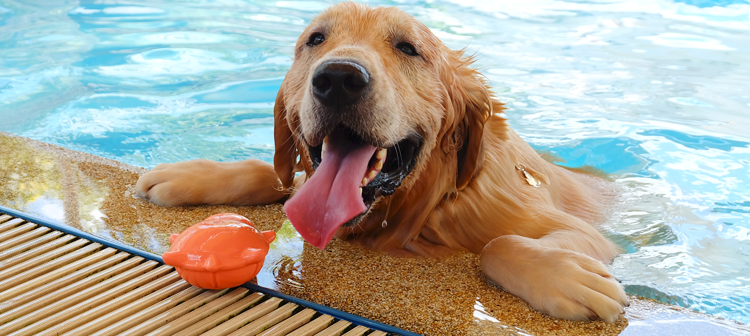
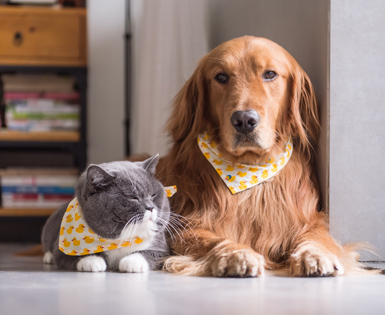
Playing in the water is a great way to cool off for both humans and our pets. But when it comes to dogs and cats, water can present some health issues and hazards as well. Keep your pets safe with these tips from Pets Best, the nationwide dog and cat health insurance agency that powers the Union Plus Pet Health Insurance program.
It’s Take Your Pet to the Office Day!
Every day is “Take Your Pet to Work Day” at Pets Best Pet Health Insurance, who powers the Union Plus Pet Health Insurance program. Meet some of their furry family members who have helped Pets Best to become a five time “Best Places to Work” winner, and customer rated 9.6 out of 10. Since 2005, they’ve been taking care of their customers’ pets with the same love they give their own. Learn more about the Union Plus Pet Health Insurance program.